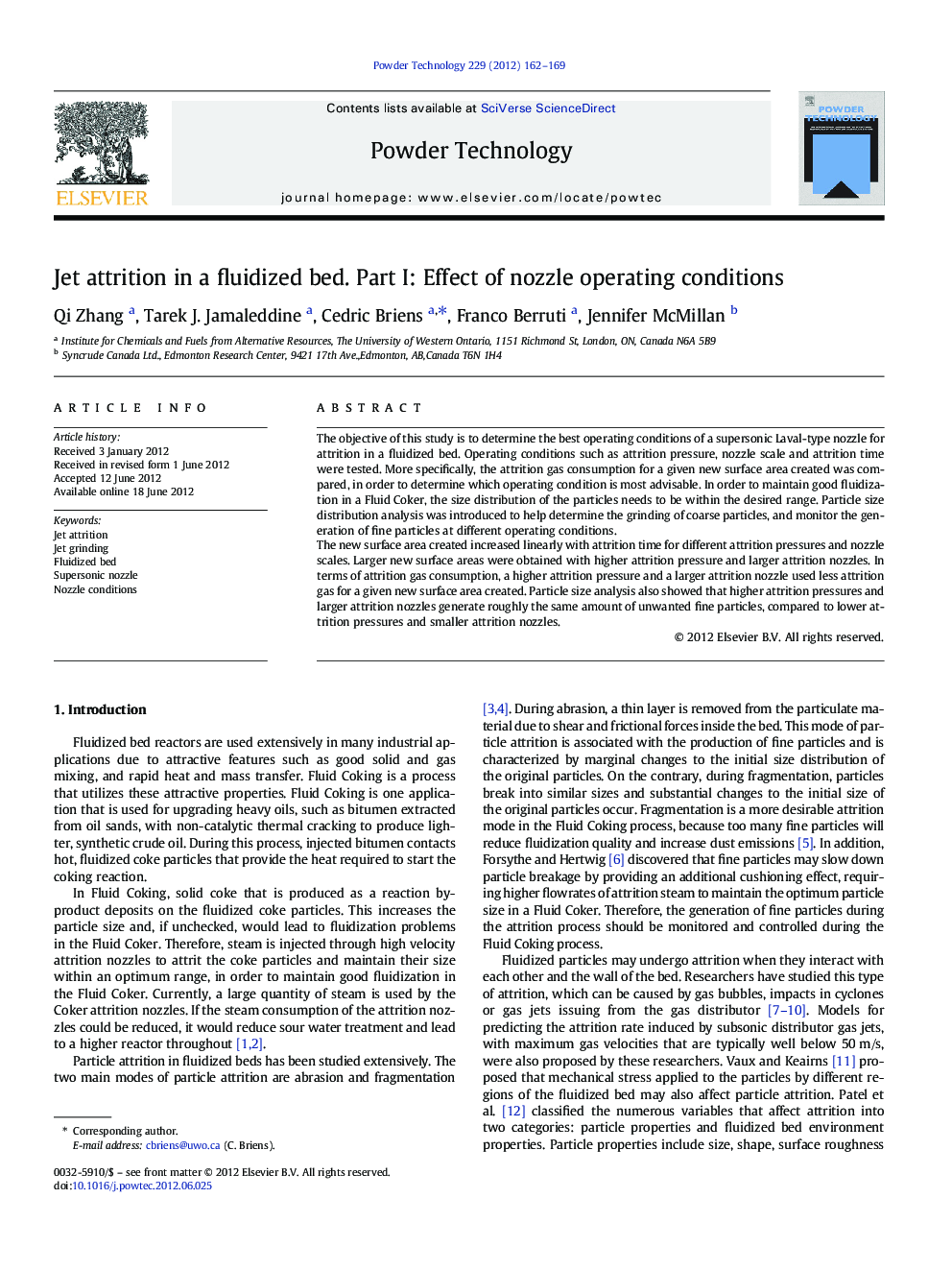| Article ID | Journal | Published Year | Pages | File Type |
|---|---|---|---|---|
| 237024 | Powder Technology | 2012 | 8 Pages |
The objective of this study is to determine the best operating conditions of a supersonic Laval-type nozzle for attrition in a fluidized bed. Operating conditions such as attrition pressure, nozzle scale and attrition time were tested. More specifically, the attrition gas consumption for a given new surface area created was compared, in order to determine which operating condition is most advisable. In order to maintain good fluidization in a Fluid Coker, the size distribution of the particles needs to be within the desired range. Particle size distribution analysis was introduced to help determine the grinding of coarse particles, and monitor the generation of fine particles at different operating conditions.The new surface area created increased linearly with attrition time for different attrition pressures and nozzle scales. Larger new surface areas were obtained with higher attrition pressure and larger attrition nozzles. In terms of attrition gas consumption, a higher attrition pressure and a larger attrition nozzle used less attrition gas for a given new surface area created. Particle size analysis also showed that higher attrition pressures and larger attrition nozzles generate roughly the same amount of unwanted fine particles, compared to lower attrition pressures and smaller attrition nozzles.
Graphical abstractNew surface area created versus mass of attrition gas for two convergent-divergent supersonic nozzles. It is better to operate with a larger nozzle at a higher pressure upstream of the nozzle.Figure optionsDownload full-size imageDownload as PowerPoint slideHighlights► Nozzle conditions greatly affect jet attrition in fluidized beds. ► Large nozzles are more efficient. ► Higher pressure upstream of nozzle is better. ► Nozzle size and pressure do not affect unwanted fines.
